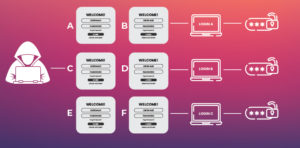
Once those bots are reputation filtered, they have plenty of other victimised computers and IoT devices for launching attacks. Most of the time, the real work for attackers is configuring and adapting their readily available tools for the specific victim’s website and modifying the scripts.Īttacker Evasion: Faking the Bot’s Originating NetworkĪttackers rarely use a stable, known set of bots.
SENTRY MBA RECAPTCHA BYPASS HOW TO
The cybercrime community already knows how to work around these simple defences. The downside is that CAPTCHAs can annoy customers and can also be a barrier for people with disabilities. The next step beyond this is to add a CAPTCHA test to the login process. This makes it hard to find the right balance. Another tool is rate limiting of login attempts, which unfortunately applies to both attackers and customers. The denylist is often based on simple geographic origins, IP addresses from earlier attacks, or canned third-party reputation lists of known attackers. If the attack tool or bot uses plain web login requests, then the user agent (used by a web browser to advertise and identify itself to a web server) may be identified as irregular and blocked.Īnother basic defence is using IP address denylists to block the known bad IP addresses. Some basic defensive measures include inspecting and blocking the web session, which some WAFs can do. Once an attack is identified, it is time to stem the tide.

Preliminary Credential Stuffing Mitigation Attempts There have been cases of backend infrastructure failing under the heavy load of authentication requests. The login pages then become overwhelmed with failed logins, and either the site crashes or customers can’t get in. The reality is that credential stuffing is often mistaken for a denial-of-service attack. This assumes that the defender is watching their failed login attempts and noting surges. There will be many of them at once, and many with incorrect passwords, so these things can look suspicious. A credential stuffing attack looks like a legitimate web login. In general, WAFs are designed to block application attacks, malformed requests, and web exploits.

Some WAFs do not detect or defend against credential stuffing attacks. Many sites often only have a basic web application firewall (WAF), or nothing at all. The lists can be loaded right into the attack tools. If the attacker hasn’t already obtained a batch of them through phishing, they can easily turn to the dark web. These credential lists are simply a file of usernames (usually email addresses) and passwords.


To perform a credential stuffing attack, the tool needs a stolen credential list to run against the targeted web login. Tapping the Vast Caches of Stolen Credentials Attackers also leverage basic open source operational tools like Wget, Selenium, PhantomJS, and cURL to simulate a browser running scripted web login sessions. Notable point-and-click attack credential tools include Sentry MBA, OpenBullet, BlackBullet, Snipr, STORM, and Private Keeper. The Preliminary Credential Stuffing AttackĪttackers often employ automation, using bots to launch and orchestrate credential stuffing campaigns. Many can now even evade antibot controls. Today, the problem is accentuated by a massive proliferation of unwanted bots. Stolen credentials, obtained from other sources, were also prominently used as part of credential stuffing attacks. The breaches resulted from stolen login credentials obtained by phishing and brute force. In the 2019 Application Protection report, F5 Labs found a majority (51.8%) of breaches in 2019 were caused by access control attacks.


 0 kommentar(er)
0 kommentar(er)
